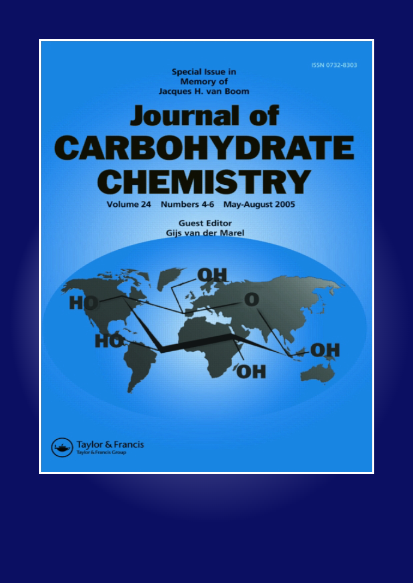环丙基亚甲基作为碳水化合物合成的多功能保护基团
IF 2.2
4区 化学
Q4 BIOCHEMISTRY & MOLECULAR BIOLOGY
引用次数: 0
摘要
环丙基甲基已发展成为碳水化合物合成的多功能保护基团。它可以由环丙醛和糖分子的1,3-二醇之间的酸催化缩醛反应形成。4,6- o -环丙基甲基的选择性还原开可以得到一个C4游离羟基和一个c6 -环丙基甲基(CPM)醚,反之亦然。在酸性条件下,环丙基甲基比苄基甲基更不稳定。本文章由计算机程序翻译,如有差异,请以英文原文为准。
Cyclopropylmethylidene as a versatile protecting group for carbohydrate synthesis
Cyclopropylmethylidene has been developed as a versatile protecting group for carbohydrate synthesis. It can be formed by acid-catalyzed acetalization between cyclopropanecarboxaldehyde and 1,3-diols of sugar molecules. Selective reductive opening of the 4,6-O-cyclopropylmethylidene can be achieved to afford a C4 free hydroxyl group and a C6-cyclopropylmethyl (CPM) ether or vice versa. The cyclopropylmethylidene was found to be less stable than benzylidene under acidic conditions.
求助全文
通过发布文献求助,成功后即可免费获取论文全文。
去求助
来源期刊

Journal of Carbohydrate Chemistry
化学-生化与分子生物学
CiteScore
2.10
自引率
0.00%
发文量
20
审稿时长
1 months
期刊介绍:
The Journal of Carbohydrate Chemistry serves as an international forum for research advances involving the chemistry and biology of carbohydrates. The following aspects are considered to fall within the scope of this journal:
-novel synthetic methods involving carbohydrates, oligosaccharides, and glycoconjugates-
the use of chemical methods to address aspects of glycobiology-
spectroscopic and crystallographic structure studies of carbohydrates-
computational and molecular modeling studies-
physicochemical studies involving carbohydrates and the chemistry and biochemistry of carbohydrate polymers.
 求助内容:
求助内容: 应助结果提醒方式:
应助结果提醒方式:


